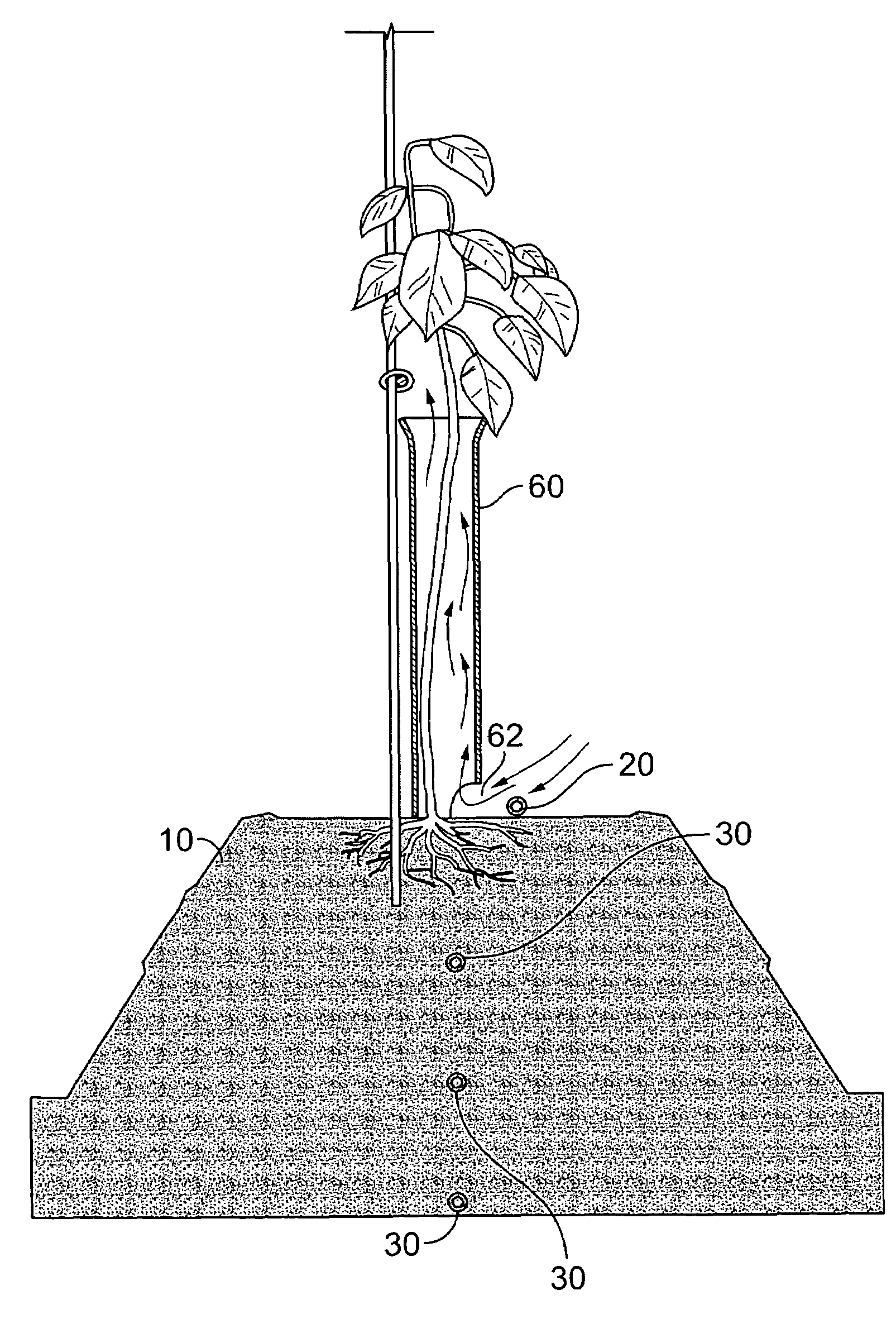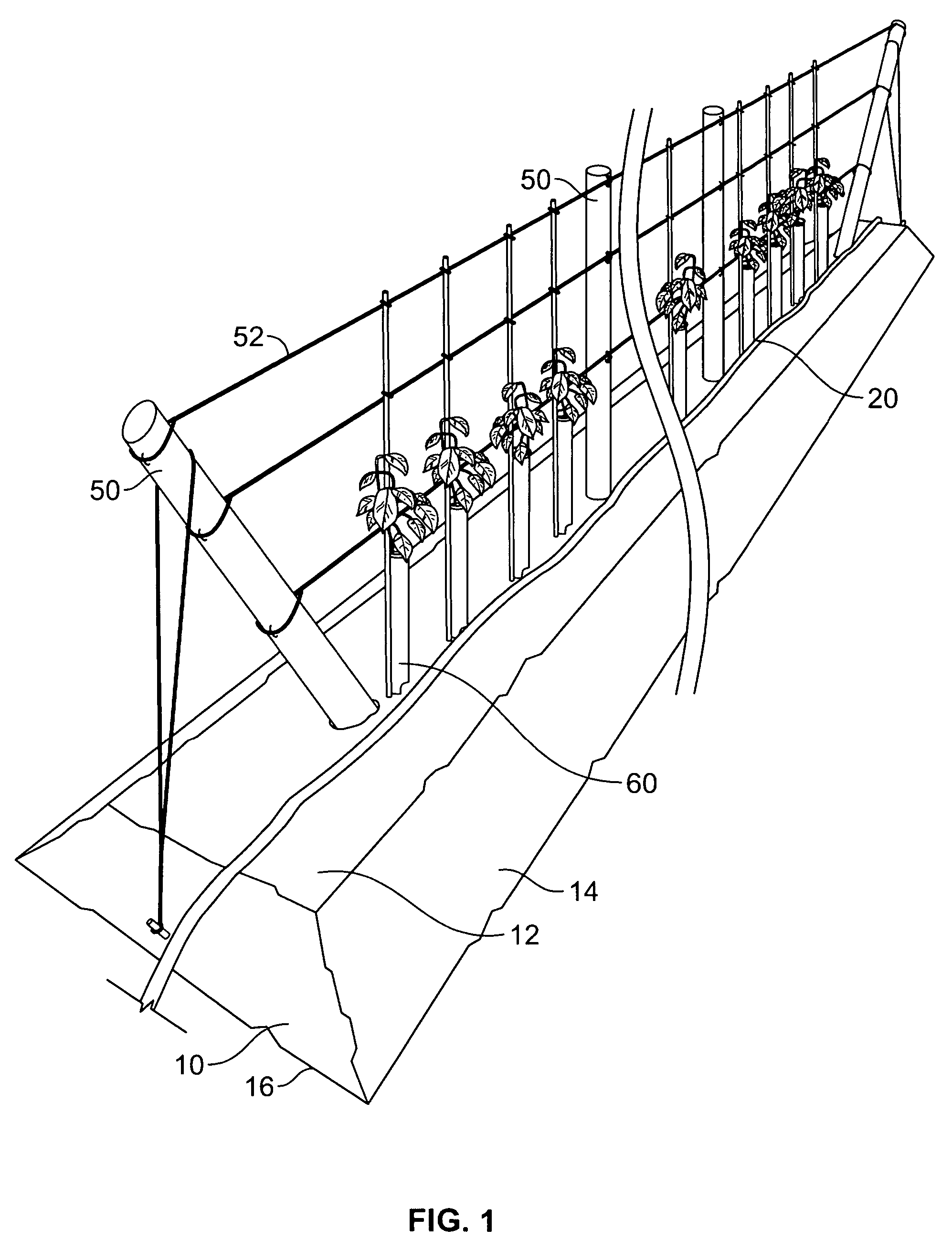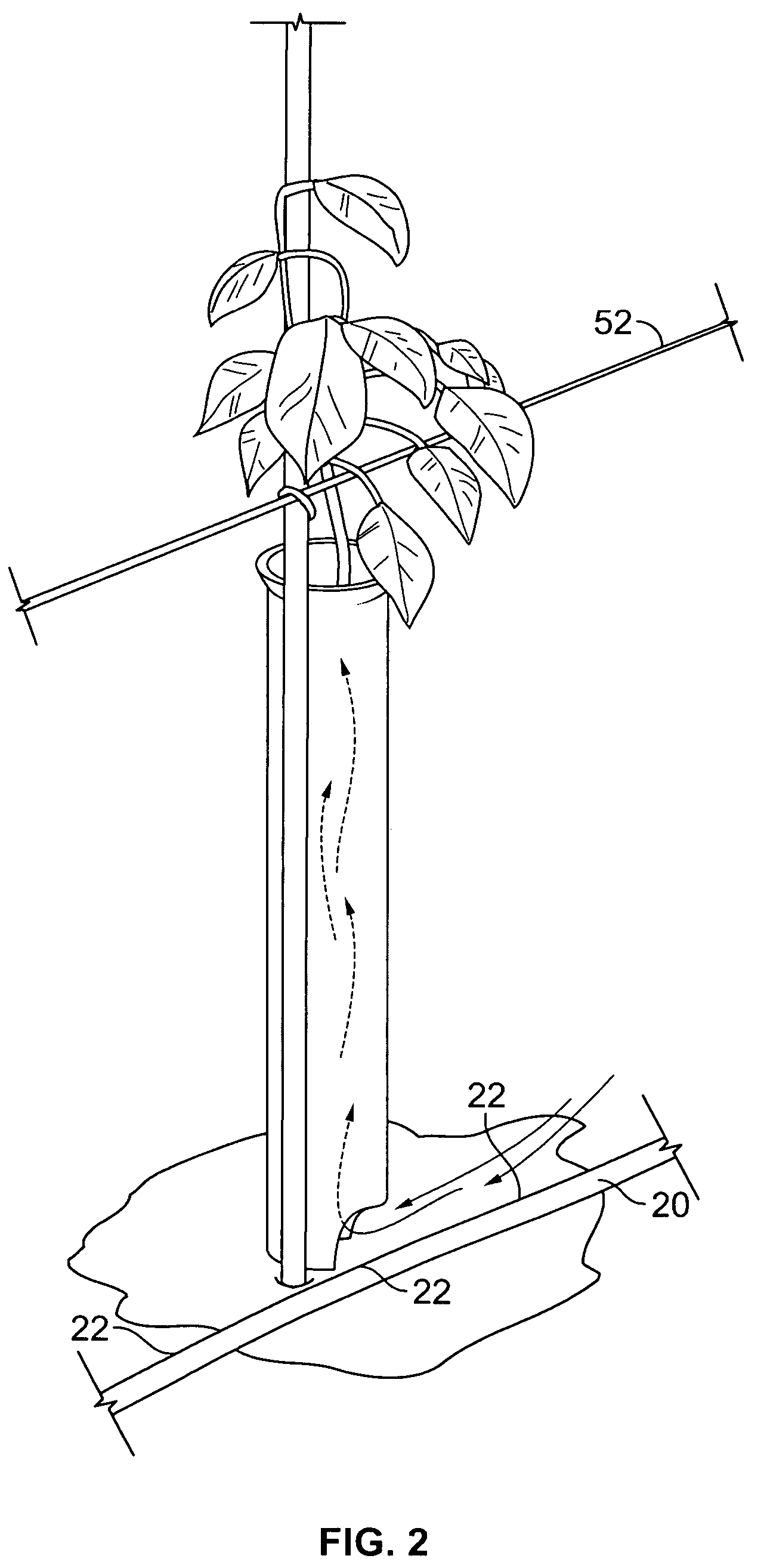Method of cultivation and components for use therewith
a technology of components and methods, applied in the field of methods and components for cultivation, can solve the problems of stress on plants, affecting the yield of plants, and the commercial production of plants and plant materials for consumption, etc., and achieves the effects of reducing space, labor and loss of plants, and reducing the use of spa
- Summary
- Abstract
- Description
- Claims
- Application Information
AI Technical Summary
Benefits of technology
Problems solved by technology
Method used
Image
Examples
Embodiment Construction
[0021]As shown in the drawing figures, a component of the present invention is an enhanced berm 10, which provides a sufficiently deep soil zone in which the roots of a plant are planted. The berm 10 provides a suitable volume of topsoil in which the feeder root system of the plant to develop.
[0022]It was discovered that the enhanced berm 10 provided a volume of soil which allowed the plant to develop above the level where harmful nematodes occur, and also provided additional benefits not previously realized by the smaller typical berms used in flood-type irrigation.
[0023]For level ground, the approximately top 12 (twelve) inches of soil is devoid of harmful nematodes due to the solar heating of that upper region of the soil that creates an environment adverse to the harmful nematodes. The enhanced berm 10 has a large surface area that readily absorbs solar energy, which warms the entire berm 10. The entire soil volume of berm 10 is thus maintained at an elevated temperature that is...
PUM
 Login to View More
Login to View More Abstract
Description
Claims
Application Information
 Login to View More
Login to View More - R&D
- Intellectual Property
- Life Sciences
- Materials
- Tech Scout
- Unparalleled Data Quality
- Higher Quality Content
- 60% Fewer Hallucinations
Browse by: Latest US Patents, China's latest patents, Technical Efficacy Thesaurus, Application Domain, Technology Topic, Popular Technical Reports.
© 2025 PatSnap. All rights reserved.Legal|Privacy policy|Modern Slavery Act Transparency Statement|Sitemap|About US| Contact US: help@patsnap.com



